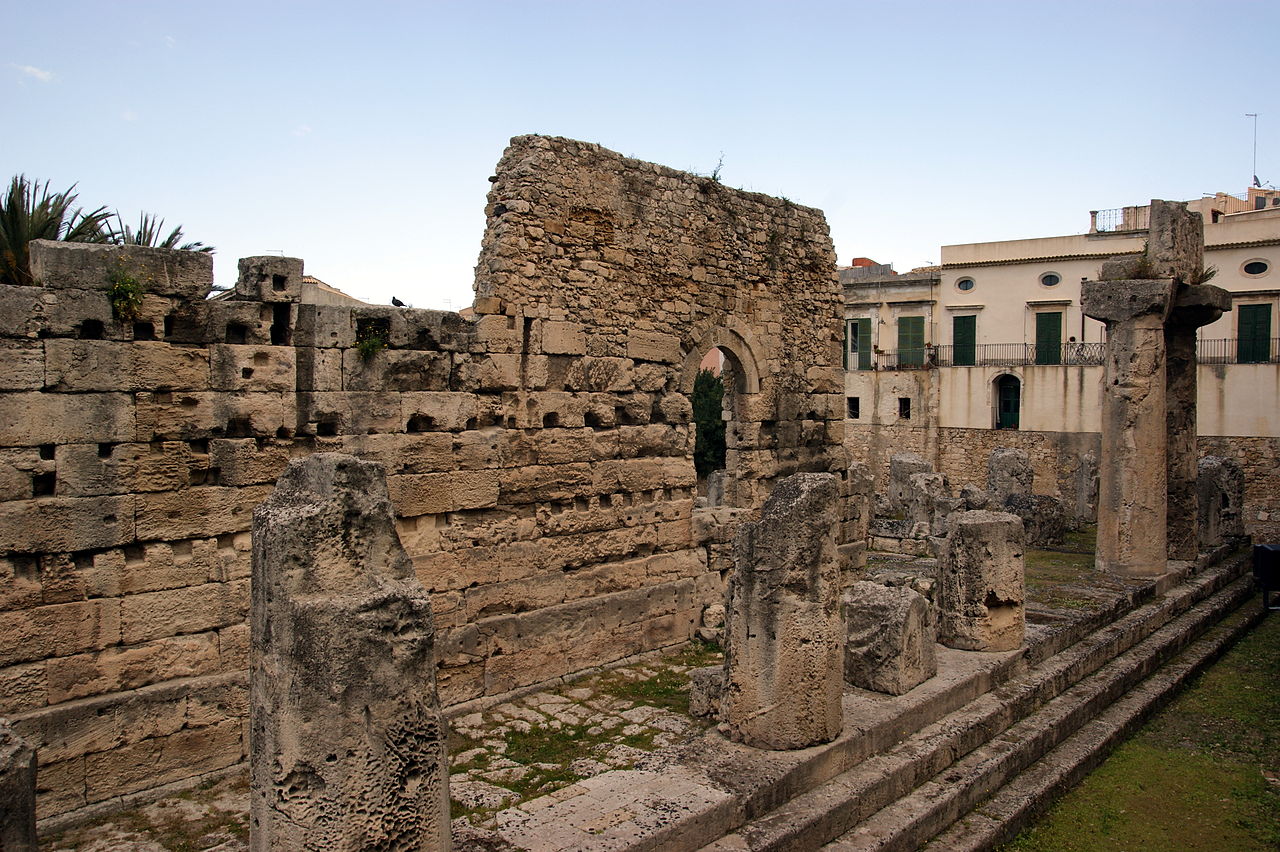Temple of Apollo
The Temple of Apollo dates back to the sixth century BC and is the oldest Doric temple in Sicily. Like many ancient monuments, it is located at a lower level compared to the present day, due to the accumulation of debris that over the centuries has raised the level of the soil.
The temple has undergone various transformations during the different dominations. It was first transformed into a church in the Byzantine era, then into a mosque, as can be seen from the inscription on the wall of the cell, until it again became a church in Norman times. It is from this period that the walls of the cell were raised and the ogival door that constituted the entrance to the church dedicated to the Saviour, still visible today with the picturesque perspective on the market of Ortigia.

In 1562 the church was then transformed into the Spanish barracks of the Old District which was superimposed in the seventeenth century the church of Our Lady of Grace, demolished in the following century. Between 1938 and 1942 the archaeologist Paolo Orsi decided to carry out a series of excavations that revealed what was left of this temple, which at the time was one of the most important in Syracuse.
The structure of the temple
The temple of Apollo of Syracuse represents the moment of transition between the temple with wooden structure and the one completely made of stone. It had a total of 46 monolithic Doric columns (6 wide and 17 long) characterized by rather simple capitals without sculptural decorations. 58 metres long and about 25 metres wide, the temple was oriented towards the east, towards the motherland like all the Greek temples of Siracusa and the Sicilian colonies. The ancient Greeks used to dedicate the stylobate (base of the temple) to a deity and the rest of the temple to another, for this reason the cult of the god Apollo is associated with that of the goddess Artemis. The upper part of the temple was covered with polychrome terracotta and some fragments of the central stone acroterium are kept at the Regional Archaeological Museo Archeologico regionale Paolo Orsi in Syracuse.
On the highest step of the eastern side, in an inscription engraved on the stone is remembered the name of the architect, a very rare circumstance in the Greek world, indicating that the contemporaries were already aware of the exceptionality of the work. Moreover, no other Greek temple has signatures or dedications, becoming such an inscription a ‘unicum’ in its typology.
THE ARCHAEOLOGICAL AREA OF THE TEMPLE OF APOLLO ACCESSIBLE BUT YOU CAN ADMIRE IT FROM THE OUTSIDE
Location: Largo XXV Luglio – Isola di Ortigia – Siracusa
Contacts: +39 0931 756232



